Best gravel bike tires – our test team's top-rated rubber for drop-bar dirt road rides
Combining road and mountain biking tire technology, these are the fastest and grippiest gravel bike tires available

The best gravel bike tires can be the difference between precise dirt road grip or constantly slipping out of control. Since they're the only part of the bike that actually contacts the ground, tires are arguably the most important component on any gravel bike.
Gravel biking covers a huge range of riding environments, and just one ride can see a decent mix of tarmac road stints, prolonged loose-gravel tracks, and even root-infested sections of singletrack. As such, the best gravel bike tires have to perform throughout a wide range of scenarios, and depending on your location and riding style, strike a vital balance between rolling resistance, off-road traction, and puncture protection.
Our expert reviewers have been putting a selection of gravel tires through their paces to find the best compromise between rolling speed, ride comfort, and off-road grip. Our top pick is the excellent Michelin Power Gravel tire, and for a great value tire we recommend the Specialized Rhombus Pro.
If you're looking to upgrade your wheels, or just want an additional setup wearing a different type of tire then be sure to check out our guide to the best gravel bike wheels.
Read on to see our list of the best gravel bike tires currently available, or scroll to the bottom to find out what to look for when choosing gravel tires.
Best gravel bike tires
Why trust BikePerfect
The quick list

Best gravel bike tire overall
A seriously good tire with fast rolling speeds, confidence-inspiring grip and impressive puncture protection.

Best value gravel bike tire
Decent speed and protection with serious cornering/slippery conditions bite, and at a bargain price.

Best race-ready gravel bike tire
One of the fastest rolling gravel tires on the scene that will also perform well on cyclocross winter duties.

Best tough gravel bike tire
The OG gravel tire gets the extra protection it’s always needed making it a fit and forget champion again.

Best luxury ride feel gravel bike tire
Fantastic floated ride feel from these fast, high-volume tires, with decent dry conditions grip.
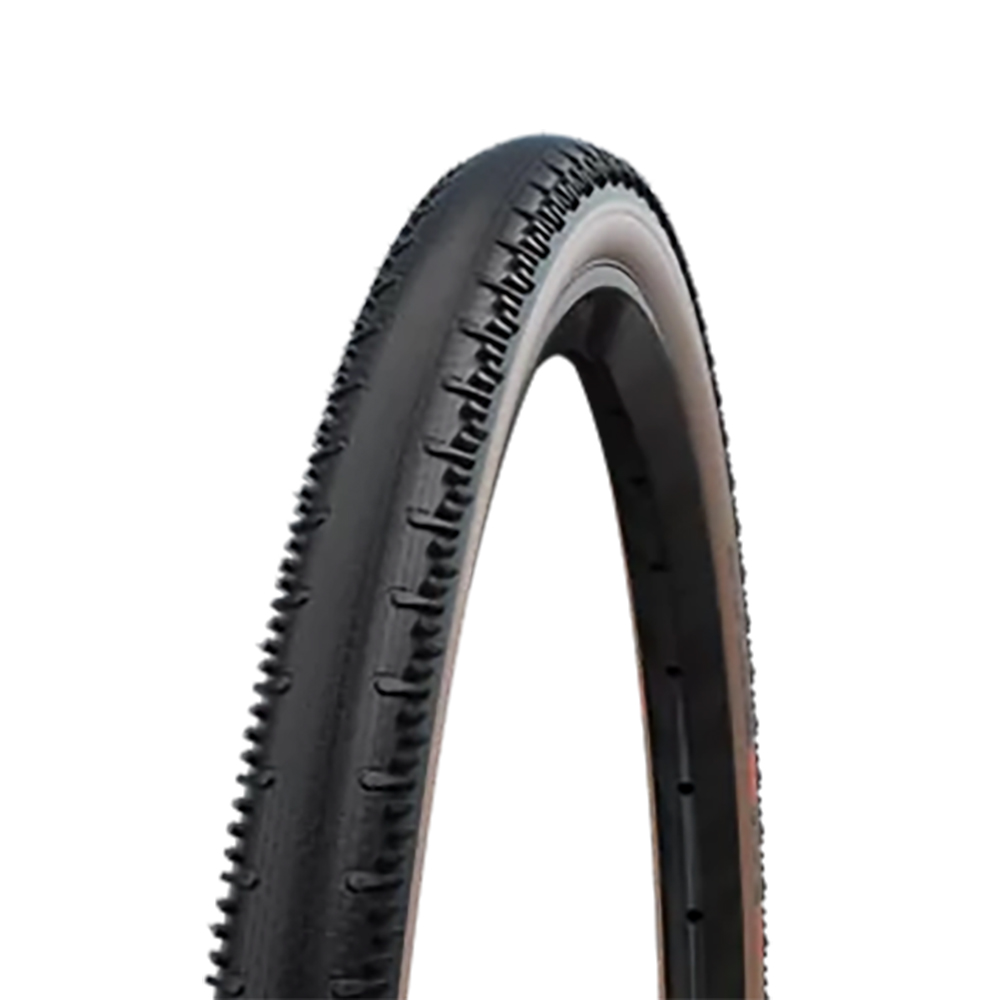
Best super-fast gravel bike tire
Beautiful fluid feel and blisteringly fast speed, but it needs a bit of TLC so definitely a performance option.
See the next 5 tires ↓

Best gravel-MTB crossover bike tire
Brings a MTB-style tread design, good protection, and a variety of size options to gravel riders, for a fair price.

Best wet weather grip gravel bike tire
A hefty tire that has a versatile mix of decent rolling ability and lifespan, with impressive filthy condition grip.

Best gravel bike tire for tubeless setup
A supple tire with a tubeless ready 127tpi casing and a low rolling resistance tread pattern.
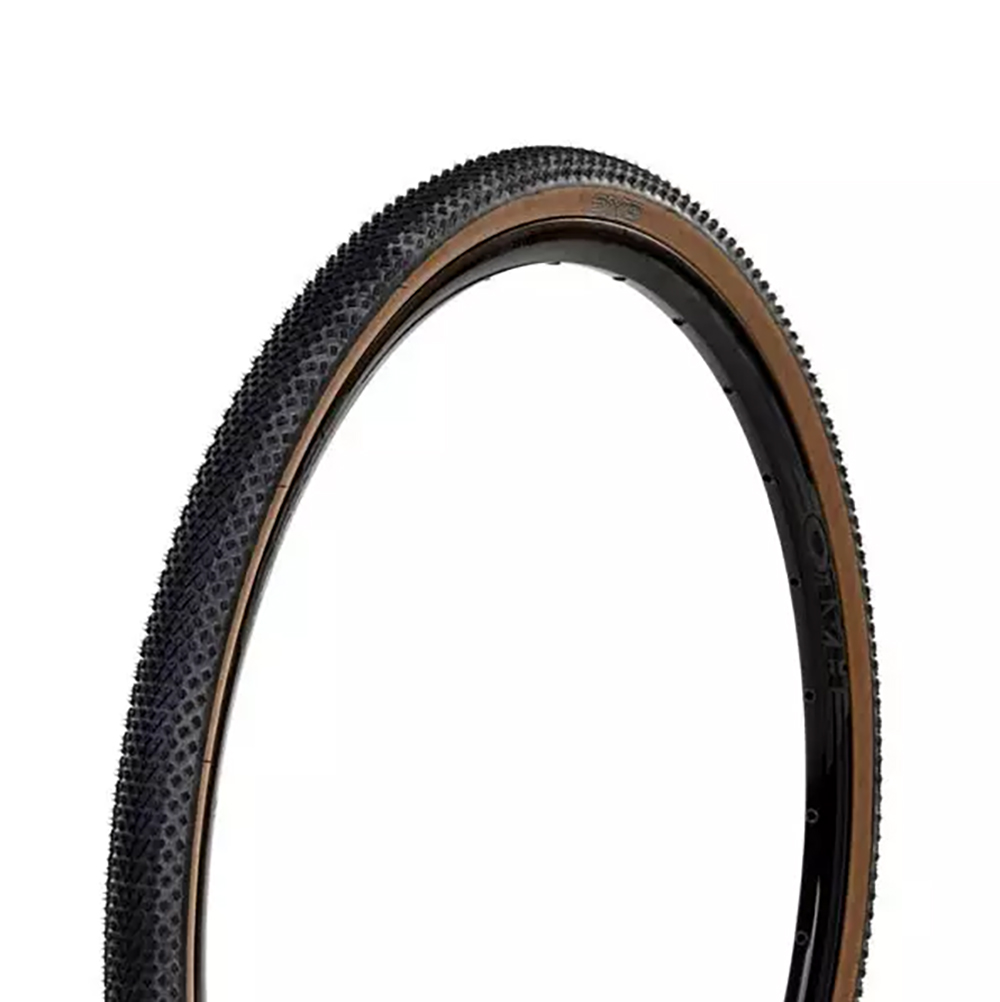
Best all-weather gravel bike tire
An all-condition tire that offers impressive amounts of grip and comfort without sacrificing speed and durability.

Best road-gravel crossover bike tire
Quick, very durable tire well suited for mixing it up between endurance road and hard-pack gravel.
1. Best overall

Specifications
Reasons to buy
Reasons to avoid
Michelin only has two gravel tires in its range but who needs an extensive range of tires when you have a tire as good as the Power Gravel?
The Michelin Power Gravel features a low profile triangle-shaped tread which is now commonly used by a lot of brands who want to produce a fast-rolling gravel tire. The directional tread has larger blocks in the center and becomes smaller, deeper, and less densely packed towards the edge of the tread. In order to give a little more corner bite when on the edge, Michelin has added a column of larger shoulder blocks to dig into the dirt when you're really leaning the bike over.
Michelin says that its Magi-X Compound enhances grip whilst maintaining a long lifespan. The tire casing uses Michelin's Bead to Bead Shield Technology which layers three 100tpi (threads per inch) sheets across the entire tire to ward off punctures. The range of sizes for the Power Gravel isn’t the best, but the 40mm we had on test is great, and the 47mm will give more adventurous riders an option for more volume.
In our testing, straight away we were impressed with these tires. They roll impressively fast on dirt and still manage to hold a good pace on the tarmac for a 40mm gravel tire. Traction is very predictable and when the tire does break free, it does so in a very calm and controlled manner. This meant we were confidently ripping around gravel corners and able to carry a lot of speed through sections that would otherwise require a bit more caution. They’ve also been impervious to punctures so far, despite a fair share of rock-to-rim impacts.
Check out our full Michelin Power Gravel tire review.
2. Best value

Specifications
Reasons to buy
Reasons to avoid
The Rhombus is one of Specialized's latest gravel tires and comes specced as standard on the brand's Diverge Evo, the flat-bar version of the flagship Diverge gravel bike.
The Rhombus uses Specialized's 2Bliss technology for easy tubeless setup and features a 60tpi carcass to protect from sidewall slashes. The center tread consists of tightly packed siped knobs in a varying arrowhead design, while there are bigger square-edge knobs closer to the edge of the tire.
Because of this design, the Rhombus is an excellent tire for riding in pretty much every scenario. We found this tire is for riders who aren't afraid to take their gravel bike on singletrack which most riders reserve for mountain bikes due to their confident cornering traction. The closely spaced center tread doesn't seem to add too much drag and we were able to carry good straight-line speed too. The fact that this well-sorted package comes in at such a great price is the icing on the cake too.
Read our full Specialized Rhombus Pro review.
3. Best race-ready
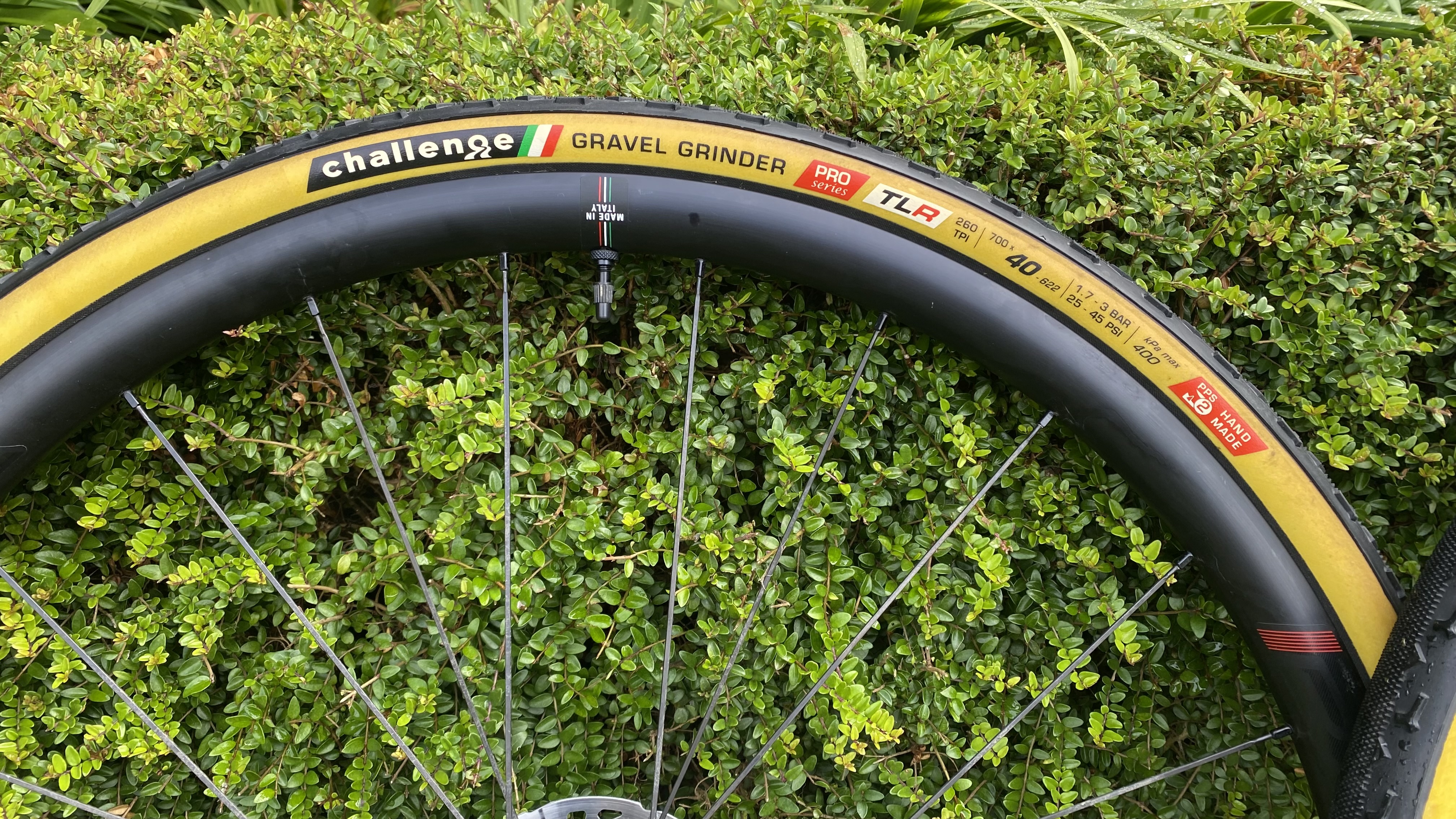
Specifications
Reasons to buy
Reasons to avoid
Challenge Gravel Grinders have been on the market for what seems like forever and over the years Challenge has improved the build of the tire to suit modern gravel riding. With a very fast rolling tread and chunky grip on the edges, they’re ideal for a a variety of gravel surfaces and can handle the mud well, albeit to a certain level of gloop.
The tires we tested (700x40mm) are part of Challenge's Handmade Tubeless Ready “Pro Series” and the brand recommends them for hardpack gravel, sand or rocky terrain. The technology has an impressive rolling resistance with comfort and overall bike handling improved. With a tpi of 260 and utilizing a double side wall of SuperPoly Corazza Armour, they are claimed to be more stable and puncture resistant than most gravel tires on the market. Other width options include 33mm, 36mm, 40mm 42mm and 46mm, all on a tanned wall, with black walled options and 650b sizing also.
Challenge has since also launched a whole range of different tires specifically for gravel racing/riding, including the new Challenge Getaway XP.
Check out our Challenge Gravel Grinder review for more details.
4. Best tough

Specifications
Reasons to buy
Reasons to avoid
With the Nano SG2, WTB has given the OG gravel tire the extra protection it always needed and put it right back at the top of our fit and forget gravel tire rankings.
The new Nano uses basically the same distinctive dual personality tread, ‘tree branch and wake of lugs’ pattern in a dual compound rubber mix. Crucially, it now gets the option of a 120tpi (that’s twice the thread count of previous Nanos) carcass, reinforced with a flat fiber nylon SG2 bead-to-bead protection layer. A few months into all the abuse we can give it, that’s still not been breached despite regular rim on rock pinches and silly low pressures to cope with snow.
The generous volume means the extra protection doesn’t obviously effect ride quality so it still bowls along nicely with no buzz or rumble. It’s not very directional so you need to stay loose and ready to drift, but ride it appropriately and it holds speed and control fine on sand, loose grit and woodsy singletrack wet or dry. It holds pressure really well (the SG2 skin also helps stop air leaks/percolation) and the Dual DNA tread is tough in terms of wear.
Check out our full review of the WTB Nano SG2 gravel tire.
5. Best luxury ride feel

Specifications
Reasons to buy
Reasons to avoid
We really liked the Teravail Cannonball's easy speed and exceptionally smooth and comfortable ride feel.
Aimed at dry conditions the Cannonball's chevron-style tread pattern is a naturally fast roller, but it's the casing that's the standout ride characteristic here; the sublime carcass feel brings hovercraft-like properties to the trail that allows you to float over ruts and cobbles with the utmost comfort and control. This does come at a slight weight and acceleration penalty, but for riders seeking durability and floaty speed this is one of the best options currently available.
Two casing options provide the choice between weight and sidewall protection too, and while the 'durable' option does add around 70g over the 'light and supple' casing, we think the tougher one would be great for racing thanks to its additional puncture protection.
While we tested the 47mm version the Cannonball is also available in 35, 38, 42, and 47mm widths. Plus there's a 650b option in both 40 and 47mm girths for those rolling on smaller hoops. Oh, and they're decent value too.
For more info, read our full Teravail Cannonball review.
6. Best super-fast
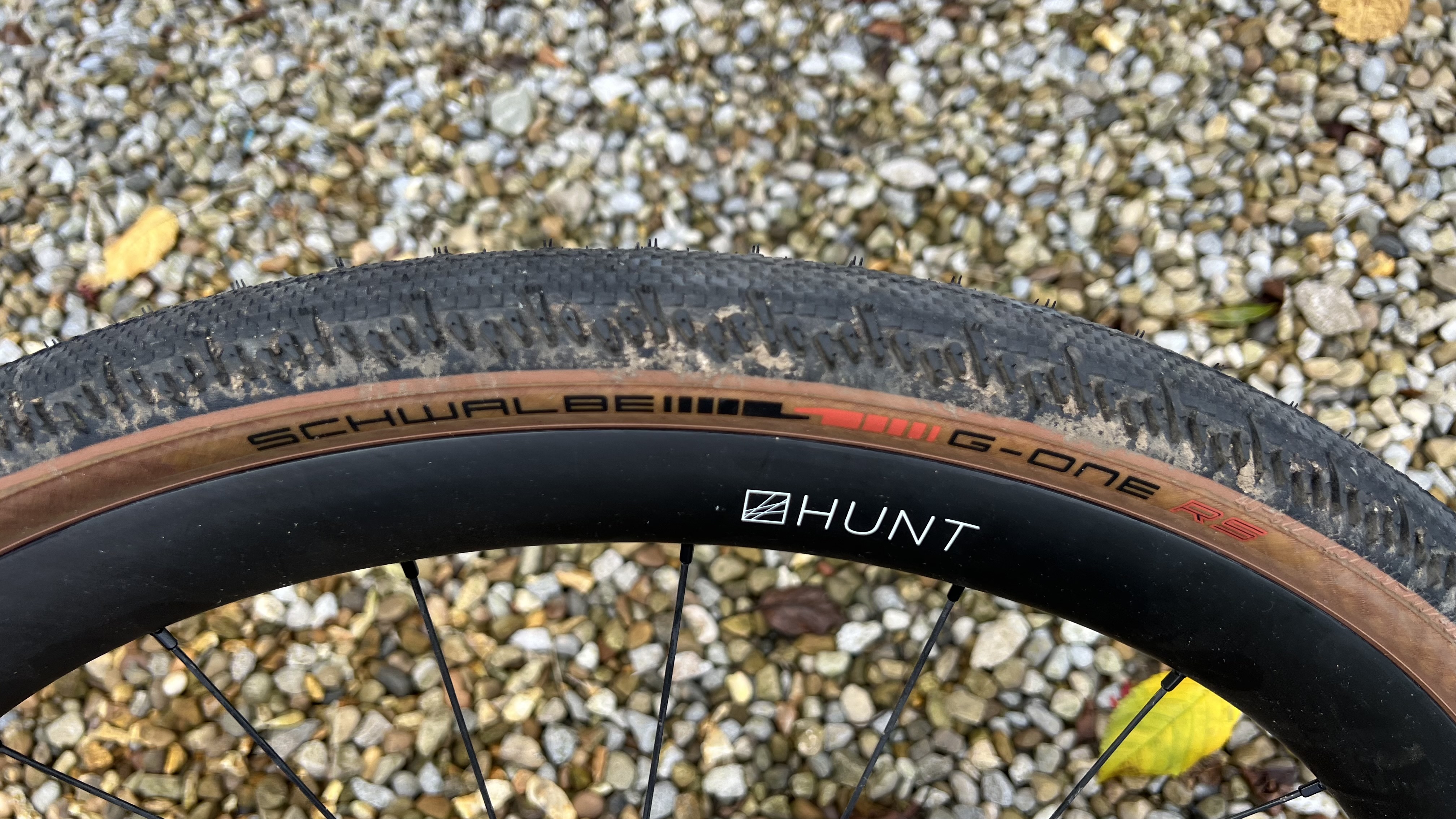
Specifications
Reasons to buy
Reasons to avoid
The ultra supple carcass of Schwalbe’s G-One R already made it one of the fastest, smoothest gravel tires around. Scalping the tread from the center of the RS has made it even quicker and quieter. They do need a bit of TLC though so it’s definitely a performance option, not a durable daily driver.
The Schwalbe G-One RS only comes in a ‘transparent sidewall’ (basically brown wall) Super Race carcass option. This is wrapped to form a triple ply on the sides of the tires, but just a double layer under the center tread. That’s crowned with a very slim ‘RaceGuard’ puncture protection strip but it still feels a very thin and flexible tire when mounting. Schwalbe also fits a very narrow chafer strip above the sidewall for reinforcing the carcass and shoring up the TLE tubeless sealing. The tread uses short oval ‘fin’ segments right on the shoulders, with a longer diagonal ‘bar' reaching inwards every fourth edge knob.
If you’re after a race-winning tire, the RS is excellent. In our testing, we found, with its relatively low weight, it accelerates extremely easily. The essentially slick center and ultra supple carcass mean nothing gets in the way of rolling speed either. Unsurprisingly, braking grip is limited, particularly in damp or fully wet conditions, but they’re not totally lethal as long as you’re careful with how hard you pull.
Check out our full Schwalbe G-One RS review.
7. Best gravel-MTB crossover

Specifications
Reasons to buy
Reasons to avoid
The Rambler has existed for a few years now, but Maxxis recently introduced a 50mm version for riders who want to get more aggressive on their gravel bike.
The Rambler's center tread uses a close-spaced mix of rough top crosses and depressed bricks, and on the shoulders, there are ramped L knobs and siped mini-MTB blocks. Riders can choose from two carcass options: Maxxis's standard EXO or SilkShield, which offers greater protection against punctures and slashes.
We've tested the Silkshield carcass and found that because of the thicker rubber, riders need to lower their pressure for a smooth, responsive ride. On the other hand, the EXO version is more supple and compliant at higher pressures and lighter.
This tire brings a MTB-style tread design, good protection, and a variety of size options to gravel riders for a fair price.
Check out our Maxxis Rambler review.
8. Best wet weather grip

Specifications
Reasons to buy
Reasons to avoid
Vittoria makes four versions of the Terreno for drop-bar bikes, and this is the all-rounder version.
Available in four sizes, the Terreno Mix uses Vittoria's TNT casing and features a centerline tread block with arrow-shaped blocks. There's a single row of shoulder knobs, which require us to lean the bike fairly aggressively to get the best grip. The Graphene infused G2.0 compound helps with wet conditions traction though. Like the other Terreno tires we’ve used, these tires have a damped and solid feel rather than floated and buoyant.
The Terreno Mix is a jack of all trades but a master of none; it will work for both tarmac and dirt riding and offers impressive wet weather grip if ridden right. The Graphene compound offers a long lifespan, and the tire is offered at a great price point.
For more info, read our full Vittoria Terreno Mix review.
9. Best for tubeless setup

Specifications
Reasons to buy
Reasons to avoid
Hutchinson classifies its Touareg as a multi-use off-road tire, suited for both gravel and cyclocross. Available in three sizes, the Touareg varies from 40 to 47mm in width, although we would always recommend going widest if your gravel bike’s frame clearance allows.
The casing is 127tpi, which makes for a supple tire with relatively low rolling resistance. In terms of tread design, there is a chevron arrangement of small blocks in the middle, to aid with both climbing traction and braking.
Along the Touareg’s tire edges there are larger tread blocks to assist with cornering traction, giving you the confidence to lean these gravel bike tires through tight switchbacks.
In terms of rubber compound, the Touareg is primarily 60 ShA durometer grade rubber, for durability, with its edge blocks being 50 ShA, making them suppler, improving grip when corner posturing at moderate lean angles.
Puncture protection is good, with Hutchinson’s textile grid embedded into the Touareg’s casing. This technology has been proven in XC mountain bike racing and should provide more than adequate puncture-proofing, for any gravel bike route.
As one would expect from a French tire product, style is not a forgotten feature, and the Touareg gravel tires are available with tan sidewalls.
Check out our Hutchinson Touareg Gridskin review.
10. Best all-weather
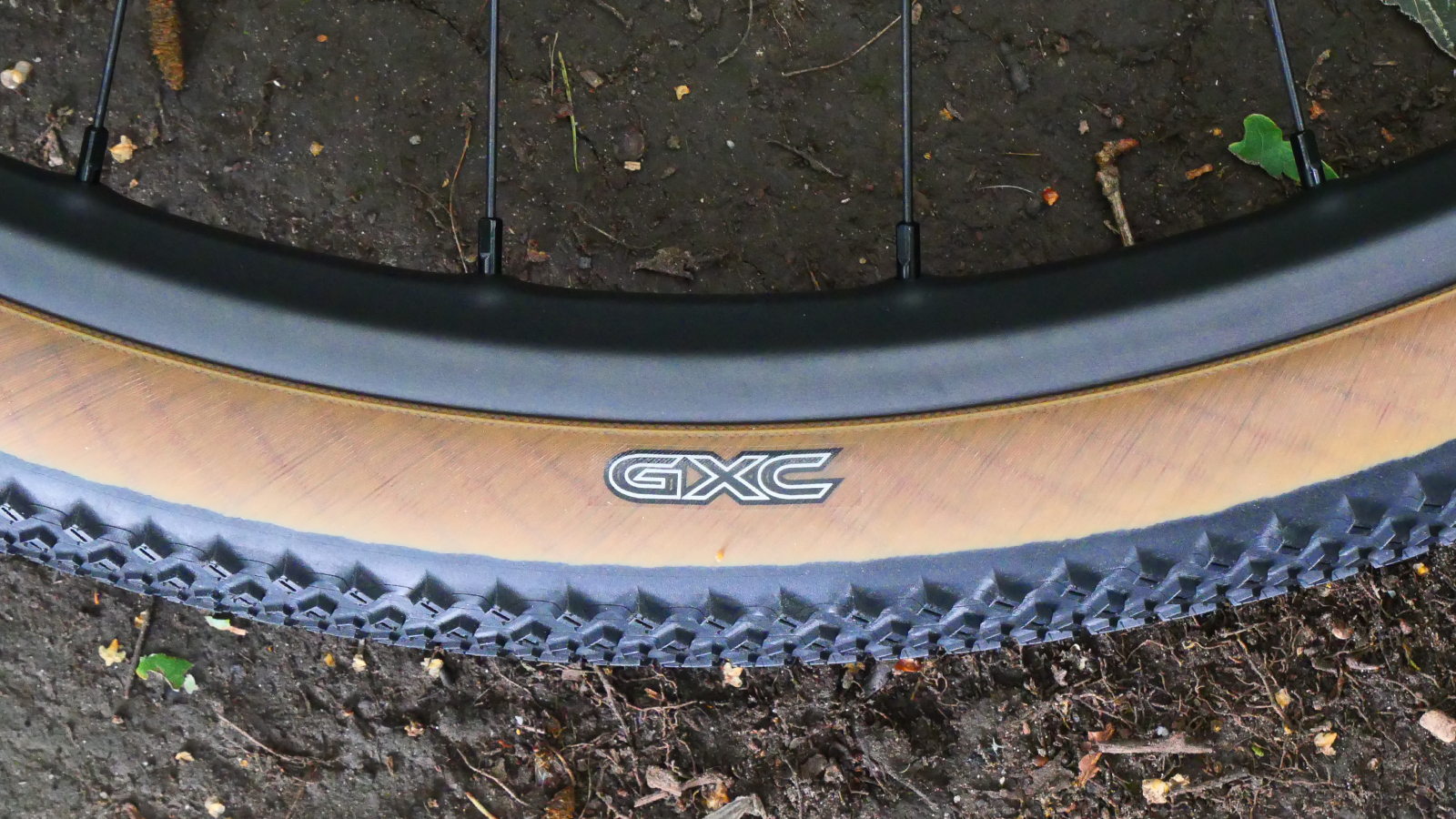
Specifications
Reasons to buy
Reasons to avoid
Halo’s gravel tires come in three tread versions covering road/hardpack with the RXR, slightly knobblier GXR for light gravel, and the GXC for all-round gravel.
The Halo GXC is intended for loose and more challenging gravel terrain and is constructed around a 60tpi carcass. The tread features a center section of closely packed directional arrows that are designed to maintain rolling speed. Move out to the edge of the tire and the tread becomes wider spaced with larger siped blocks for better corner adhesion. There isn’t much of a selection of sizes; in 700c there are 38mm or 42mm and the only larger size available is a 47mm in a 650b.
In our testing we found the continuous tread across the tire gives an even level of grip as you lean the tire into corners. The pattern doesn’t feel all that fazed by different conditions either, although, like any gravel tire, it's going to find its limits in wet and slimy conditions. Durability is also decent, with both our sets of tires doing a reasonable job of holding out against rough and rocky gravel tracks.
Find out more in our full Halo GXC review.
11. Best road-gravel crossover

Specifications
Reasons to buy
Reasons to avoid
The second Michelin tire in our lineup is the slicker Power Adventure, which is aimed at transitioning from tarmac to light gravel. The tread reflects this with a slick center portion and a treaded outer edge. Michelin says it has specced this tire with its Gum-X compound which is said to add a little more durability. The casing uses three layers of 100tpi sheets which are stretched bead to bead for full tire protection.
Michelin offers the Power Adventure in black or ‘classic’ sidewalls and four sizes ranging from 30mm for endurance road and on to 36mm, 42mm, and 48mm for fast gravel. We had the 42mm size tire to test which is a good balance for mixed surface days out.
We found the combination of a slick center channel means they roll very well on the road and hardpack gravel alike. Lean in and the shallow block tread along the edges quickly engages to give a reliable grip. The transition is smooth as well so we felt very confident leaning the Power Adventure into corners at speed.
The Power Adventure tires are not as capable of being run at lower pressures as their treaded compatriots though. Although cornering remained stable when being run at sub 30psi, resistance against impacts was greatly diminished and we felt a number of sudden and unexpected blunt rock-to-rim impacts.
For more info, read our full Michelin Power Adventure review.
How to choose the best gravel bike tires
What wheel size do I have?
Before ordering new rubber you need to decipher the diameter of your gravel bike's wheels. While most gravel bikes roll on 700c hoops, some use a smaller 650b size.
700c wheels tend to offer the ideal balance between tire width and rolling speed, while 650b setups let you run a wider tire on bikes with limited clearance. Not all bikes are compatible with both though so it’s certainly worth checking.
The best way to check is to see what’s printed on the sidewall of your existing tires, or by visiting the website of your bike manufacturer.
What width tire should I get?
The first thing to do when deciding on a tire width is to check the clearance of your frame. The best way to do this is to simply measure the distance between each chainstay, or check out the max tire width published by the manufacturer of your frame.
But what is the ideal size? Different riders are going to want different width tires to best suit their location and /or riding style, but as a rule, we reckon you should be looking at widths from 33 to 45mm – they will roll marginally slower than narrower options but the increase in comfort and control is well worth the slight sacrifice.
It is worth noting that wider tires work best with wider rims, so if you’re wanting to plump up your gravel setup check out our guide to the best gravel bike wheels.
Should I set my gravel tires up tubeless?
In a word, yes! If your wheels and tires are tubeless compatible we can’t think of one reason why you wouldn’t want them set up so. A tubeless setup allows you to run lower pressures which in turn boots traction and comfort, and it also totally removes any possibility of a pinch flat. Check out our handy How to setup tubeless tires guide, with all the details of what you need and how to master tubeless setup.
Tubeless systems do vary in quality and reliability though, so it’s always worth investing in the best tubeless sealant and tubeless valves.
What about tire inserts?
Tire inserts have been popular among the best mountain bikes for a while now as they allow you to run lower pressures all while getting increased sidewall support and rim protection.
But what about gravel? Well, the ability to further drop the tire pressure without any real compromise is a bonus, as it massively boots traction and comfort in nearly every scenario. They're brilliant for racing thanks to their run-flat properties too. In our review of Vittoria’s Air-Liner Gravel insert we found it performed well on the trail.
Tire inserts aren’t without their gripes though; they add rotating weight and even the best tire inserts can prove tricky to install.
Should I prioritise rolling speed or grip?
This will always be a double-edged sword as the tires featuring the bigger, gripper knobs are always going to grip better in the dirt at the expense of tarmac efficiency, and vice versa.
In our opinion, it’s about choosing what’s best for you and your riding – if you’re riding predominantly on road, then choose a slimline tire that’s going to save you watts on the tarmac. But if your riding is mostly in the wilderness, something with a reliable bite and sidewall support is going to be much more rewarding when things get spicy.
How long should I expect my gravel tires to last?
The longevity of gravel tires all depends on the rubber compound that’s been used and where the tire is mostly ridden. Tires designed to be ridden off-road tend to be made from a softer rubber as this adds comfort and grip on uneven surfaces; the flip side is they wear fast and roll slower when ridden for long durations on tarmac.
As mentioned earlier it really depends on where you’re riding most, but selecting the right tire for the job will not only boost performance but it’ll increase longevity too.
Can I put road tires on my gravel bike?
One of the best things about gravel bikes is their versatility, and nearly every 700c bike is ready to take a proper set of road tires. It can actually be a great option for a winter bike as most gravel bikes will take full-length mudguards too.
While road tires will result in a fast ride, it’s worth noting they will make riding on anything other than tarmac super sketchy, so it’s best to leave any off-road excursions to chunkier rubber.
How we test gravel tires
We put hundreds of miles on all the gravel bike tires we test, in all manner of conditions and surfaces. While many of the tires here are designed for a specific use, the nature of gravel riding usually means hitting a number of different surfaces, so we ensure we do that for every tire we test too.
Meet the testers
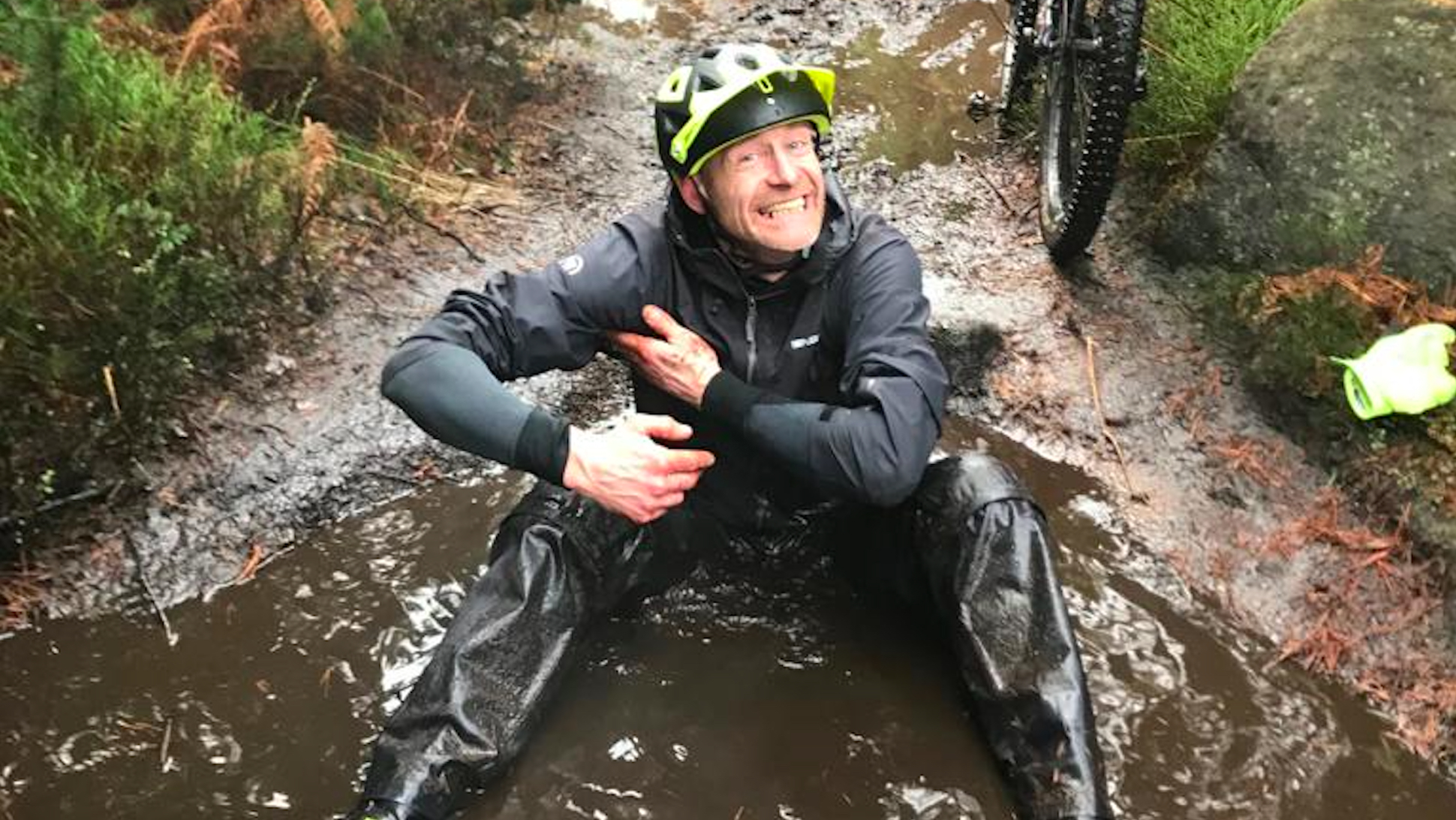
Hatched in Yorkshire Guy's been hardened by riding round it in all weathers since he was a kid. He's been writing and testing for bike mags since 1996, which has included hammering gravel bikes and equipment since modern gravel first became a thing.

Based in Edinburgh, Graham has some of the best mountain biking and gravel riding in the UK right on his doorstep. With almost 20 years of riding experience, he has been involved in gravel riding and racing for many years.

Graham Cottingham joined the BikePerfect team as our senior tech writer in 2020. With over 20 years of riding experience, he has dabbled in downhill, enduro, and gravel racing. Not afraid of a challenge, Graham has embraced bikepacking over the last few years and likes nothing more than strapping some bags to his bike and covering big miles to explore Scotland's wildernesses. When he isn’t shredding the gnar in the Tweed Valley, sleeping in bushes, or tinkering with bikes, he is writing tech reviews for BikePerfect.
Rides: Cotic SolarisMax, Stooge MK4, 24 Bicycles Le Toy 3, Surly Steamroller
Height: 177cm
Weight: 71kg
- Paul BrettStaff writer
- Amy PerrymanFreelance Writer
- Guy KestevenTechnical-Editor-at-Large
